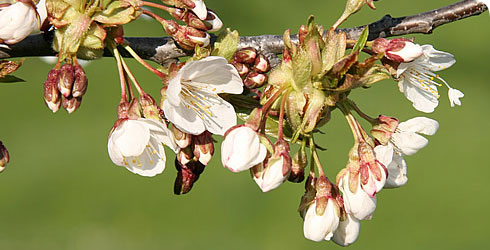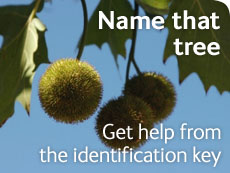Wild cherry
Prunus avium
ID check
- Flowers in clusters of 2–6, with hairless stalks all arising from a central point.
- Flowers cup-shaped, more than 20mm across on stalks more than 15mm long.
- Bud scales persisting at base of flower stalks.
- Leaves dull above, sparsely hairy beneath.
- Leaf margins with blunt or rounded teeth, often tipped with a claw-like gland.
- Leaf stalk hairless.
- Fruit more than 10mm long, on stalks 20mm or more long.
Description
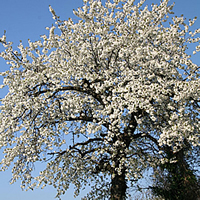
Wild cherry tree © Robert Vidéki, Doronicum Kft. Bugwood.org
Tree
Up to 25m tall.
Bark
Greyish.
Leaves
Margins double-toothed, the teeth ending with a purple gland, hairy at least on the veins beneath; leaf stalk with several wart-like red glands near the junction with the blade.
Bud scales
Large brown bud scales at the base of each flower cluster.
Flowers
Fully-open flowers are 25–35mm across, shallowly cup-shaped, white, and in some cultivars double. The sepals form an urn-shaped tube constricted just below the mouth.
Ripe fruit
10-20mm long, blackish or yellowish-red, sweet or sour-tasting.
Notes
The wild cherry is a common woodland tree but is also often planted. The fruit is edible. The cultivated sweet or dessert cherries are derived from wild cherry.
Images

Wild cherry fruit.
© Bob Press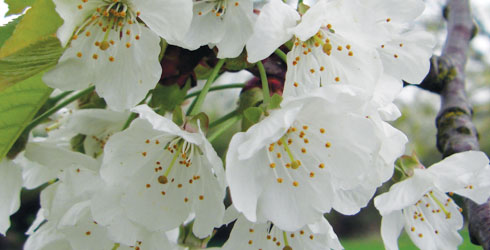
Wild cherry flowers.
© Bob Press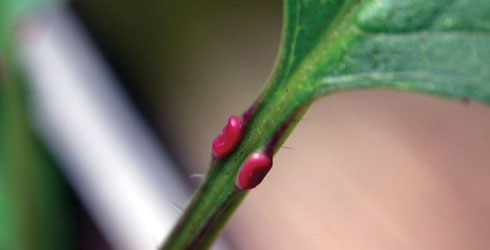
Wild cherry stalk with red glands.
© André Abrahami, Creative Commons Attribution-Share Alike 2.5 Generic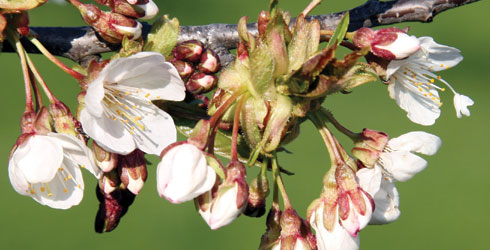
Wild cherry flowers.
© Böhringer Friedrich, Creative Commons Attribution-Share Alike 2.5 GenericDiagrams
These diagrams explain some of the important tree and plant parts.
Flower

Leaf parts
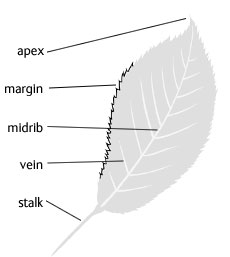
Leaf shapes
These diagrams show the different leaf shapes you might come across on your survey. Leaf shapes are important for identifying trees.
Palmate leaf
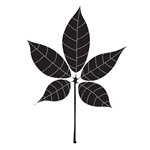
Palmately lobed leaf
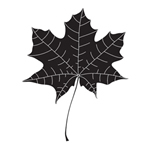
Pinnate leaf
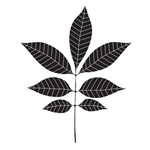
Pinnately lobed leaf

Leaf arrangements
The way leaves are arranged on a stem can be important for identifying trees.
Opposite leaves
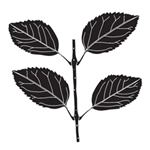
Alternate leaves
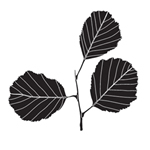
Glossary
These definitions explain some of the trickier words and phrases used in these pages.
Alternate – the arrangement of leaves on a stem - the leaves attach at different but alternating points, rather than opposite points.
Anther – the part of the stamen that contains pollen.
Apex – the top or end; the tip of a leaf for example.
Bract – a leaf-like structure, usually found below the flower or fruit.
Bud scale – usually a type of modified leaf that encloses and protects a bud.
Catkin – slender inflorescences made up of small flowers, usually reduced to the male and female parts. Catkins are typical of wind-pollinated trees.
Coniferous – trees that have cones, and needle or scale-like leaves.
Crown – in a tree, everything above the trunk.
Deciduous – a tree that sheds its leaves all at once in the autumn.
Evergreen – a tree that retains its leaves all year round.
Girth – the circumference of something, like the trunk of a tree.
Gland (of a leaf) – a small organ on a leaf that gives out oils or similar substances.
Inflorescence – the arrangement of all the flowers on a tree. The shape is used to help identify the plant.
Key – a tool used to identify groups and species of living things.
Leaflet – a subdivision of a leaf - it may look like a leaf but is attached to the leaf stalk or midrib, not to the shoot.
Lobe – a rounded or pointed section of a leaf, not divided into a leaflet.
Margin – the edge of a leaf.
Midrib – the central vein of a leaf.
Native – a tree that occurs naturally in an area, as opposed to a non-native tree that has been introduced.
Opposite – the arrangement of leaves on a stem - the leaves attach in pairs at the same point, opposite each other, rather than attaching at alternate points.
Palmate – a leaf shape in which the lobes or leaflets radiate from a single point, like fingers from a hand.
Petals – usually larger and more brightly coloured than sepals.
Pinnate – a leaf shape in which the lobes or leaflets are arranged on both sides of the stalk or midrib like a feather.
Pollarded – when the upper branches of a tree have been cut back to encourage new growth.
Sepals – the outermost parts of a flower which cover and protect the flower when it is in bud. They are usually green.
Side shoots – short, spur-like shoots growing from the main shoots.
Spike – an elongated cluster of flowers; a type of inflorescence.
Stalk – the structure that supports the blade of a leaf.
Stigma – the part at the end of the style. It is covered with a sticky substance that pollen adheres to.
Stipule – a small, leaf-like structure, found where the leaf connects to the stem.
Style – a tube-like structure in the centre of a flower that supports the stigma.
Trunk – the woody stem of a tree, before the branches.
Urban forest – the trees in our towns and cities.
Whorl – 3 or more leaves or needles circling around a stem.
